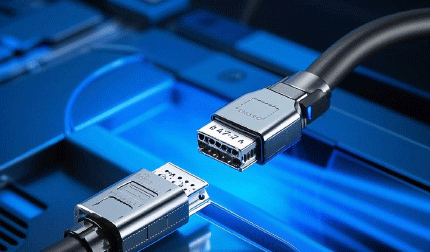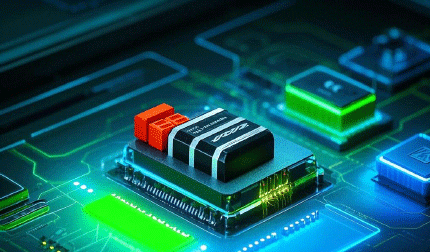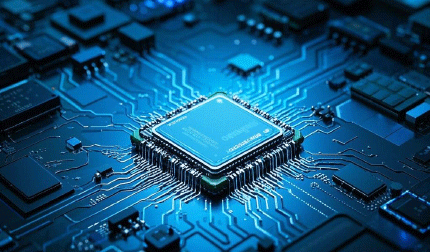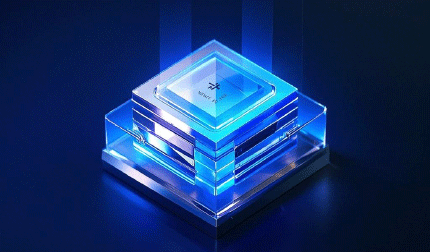Connectors and Interconnect Devices: The Unsung Heroes Enabling Seamless Connectivity
1/15/2025 5:55:23 PM
In the intricate web of modern technology, connectors and interconnect devices serve as the essential links that bind various electronic components together. These unassuming yet crucial elements are the unsung heroes that enable seamless communication, power transfer, and data flow within a vast array of electronic systems. From the tiniest wearable devices to the most colossal data centers, connectors and interconnects play a fundamental role in ensuring the reliable operation of our technological infrastructure.
1. The Basics of Connectors and Interconnect Devices
1.1 Defining Connectors
Connectors are mechanical devices designed to join electrical circuits or components. They provide a means of establishing a physical and electrical connection between two or more parts, allowing for the transfer of electrical signals and power. Connectors come in a wide variety of shapes, sizes, and types, each tailored to specific applications and requirements.
At their most basic level, connectors consist of two main parts: a male component with protruding pins or contacts and a female component with corresponding receptacles or sockets. When the two parts are mated, the contacts align, creating an electrical path. This simple yet effective design principle forms the basis for countless connector applications.
1.2 Understanding Interconnect Devices
Interconnect devices, on the other hand, are a broader category that encompasses connectors as well as other components and systems used to establish connections between different parts of an electronic system. This can include cables, printed circuit boards (PCBs), backplanes, and other intermediary components.
Cables, for example, are a common type of interconnect device that consists of one or more electrical conductors enclosed in a protective sheath. They are used to transmit signals and power over longer distances between components that are not in direct physical contact. PCBs, on the other hand, are flat boards with etched conductive traces that connect various electronic components mounted on the board. Backplanes, typically found in large - scale computing systems, are high - density interconnect structures that provide a common connection point for multiple circuit boards.

2. Types of Connectors and Their Applications
2.1 Electrical Connectors
2.1.1 PCB Connectors
Printed circuit board connectors are used to connect components to a PCB or to connect multiple PCBs together. There are several types of PCB connectors, each with its own unique features and applications.
Pin - Header and Socket Connectors: These are among the most basic types of PCB connectors. Pin - headers are male connectors with a row or array of pins that are inserted into holes on a PCB, while sockets are the corresponding female connectors. They are commonly used for connecting daughter boards to a main board, as well as for connecting external devices such as sensors or actuators to a PCB.
Edge - Connector: An edge - connector is a type of connector that is formed by exposing a set of conductive pads along the edge of a PCB. These pads can be inserted into a matching socket on another PCB or a backplane. Edge - connectors are often used in applications where a high - density connection is required, such as in computer expansion cards.
Surface - Mount Connectors: With the trend towards miniaturization in electronics, surface - mount connectors have become increasingly popular. These connectors are directly soldered onto the surface of a PCB, eliminating the need for through - hole mounting. They are smaller in size and offer better electrical performance compared to through - hole connectors, making them ideal for use in compact electronic devices like smartphones and wearables.
2.1.2 Cable Connectors
Cable connectors are used to terminate cables and establish a connection to other components. They are available in a wide range of types, depending on the type of cable and the application.
Coaxial Connectors: Coaxial connectors are designed for use with coaxial cables, which consist of a central conductor surrounded by an insulating layer and a outer conductive shield. These connectors are commonly used in applications such as television antennas, cable TV systems, and high - frequency communication systems. They are able to transmit high - frequency signals with low loss and minimal interference.
Twisted - Pair Connectors: Twisted - pair connectors are used with twisted - pair cables, which are widely used in Ethernet networks for data transmission. The most common type of twisted - pair connector is the RJ45 connector, which is used to connect computers, routers, and other network devices to a local area network (LAN). Twisted - pair connectors are designed to minimize electromagnetic interference (EMI) and ensure reliable data transfer.
Power Connectors: Power connectors are specifically designed for transferring electrical power. They come in various sizes and configurations, depending on the power requirements of the application. In consumer electronics, power connectors such as USB - C are becoming increasingly popular due to their ability to support high - power charging as well as data transfer. In industrial applications, larger - sized power connectors are used to supply power to heavy - duty equipment.
2.2 Optical Connectors
With the increasing demand for high - speed data transmission, optical connectors have become an essential part of modern communication systems. Optical connectors are used to connect optical fibers, which transmit data in the form of light signals.
SC Connectors: Subscriber Connector (SC) is a popular type of optical connector that is widely used in fiber - optic communication networks. It features a push - pull mechanism for easy connection and disconnection. SC connectors are commonly used in local area networks, fiber - to - the - home (FTTH) applications, and telecommunications equipment.
LC Connectors: Lucent Connector (LC) is a smaller - sized optical connector that offers high - density connectivity. It uses a small - form - factor ferrule and a snap - in coupling mechanism. LC connectors are often used in data centers and high - speed optical communication systems where space is limited.
MTP/MPO Connectors: Multifiber Termination Push - On (MTP) or Multifiber Push - On (MPO) connectors are used for connecting multiple optical fibers in a single connector. They are commonly used in high - density fiber - optic applications, such as data center backbones and fiber - optic cabling systems. MTP/MPO connectors can significantly reduce the space and cost required for fiber - optic connections.
3. The Role of Connectors and Interconnects in Different Industries
3.1 Consumer Electronics
In the consumer electronics industry, connectors and interconnects are everywhere. In smartphones, for example, a variety of connectors are used to connect the display, camera, battery, and other components to the main circuit board. The charging port, which is typically a USB - C connector, not only provides power to the device but also enables data transfer for synchronization and software updates.
In laptops, connectors are used to connect the keyboard, touchpad, screen, and external devices such as printers and monitors. The mini - DisplayPort or HDMI connectors are commonly used for connecting laptops to external displays, allowing users to enjoy a larger screen experience. Wearable devices, such as smartwatches and fitness trackers, also rely on connectors to charge the device and transfer data to a paired smartphone.
3.2 Automotive Industry
The automotive industry has a significant need for reliable connectors and interconnects. In modern vehicles, there are numerous electronic systems, including engine control units, infotainment systems, advanced driver - assistance systems (ADAS), and electric vehicle (EV) powertrain components.
Connectors are used to connect these various systems, ensuring the proper transfer of signals and power. For example, high - voltage connectors are used in EVs to transfer electrical power from the battery to the motor. These connectors need to be able to handle high - current loads and provide a secure connection to prevent electrical arcing and other safety hazards. In addition, automotive connectors are designed to withstand harsh environmental conditions, such as high temperatures, vibrations, and moisture.
3.3 Aerospace and Defense
In the aerospace and defense sectors, the reliability and performance of connectors and interconnects are of utmost importance. In aircraft, connectors are used to connect various avionics systems, such as navigation systems, communication systems, and flight control systems. These connectors need to be lightweight, yet able to withstand the extreme conditions encountered during flight, including high - altitude pressure changes, temperature variations, and vibrations.
In defense applications, such as military vehicles and weapons systems, connectors and interconnects play a crucial role in ensuring the proper functioning of critical components. They are designed to be rugged and resistant to electromagnetic interference, as well as to withstand the harsh conditions of the battlefield.
3.4 Data Centers
Data centers are the backbone of the digital economy, and connectors and interconnects are essential for their operation. In a data center, thousands of servers, storage devices, and networking equipment need to be connected together to form a high - speed, reliable network.
High - speed connectors, such as SFP (Small Form - factor Pluggable) and QSFP (Quad Small Form - factor Pluggable) connectors, are used to connect network switches, servers, and storage devices. These connectors are capable of transmitting data at very high speeds, up to 100 Gbps or even higher in some cases. In addition, data centers rely on backplanes and cabling systems to provide a high - density, low - latency connection between different components.
4. Technological Advancements in Connectors and Interconnect Devices
4.1 High - Speed Data Transmission
As the demand for faster data transfer speeds continues to grow, connectors and interconnects are constantly evolving to meet these requirements. In recent years, there have been significant advancements in high - speed connector technology, enabling data rates of 10 Gbps, 25 Gbps, 50 Gbps, and even 100 Gbps or higher.
New connector designs, such as differential signaling connectors, are being developed to reduce signal interference and improve the integrity of high - speed signals. These connectors use multiple pairs of conductors to transmit data in a differential mode, which helps to cancel out common - mode noise and improve the signal - to - noise ratio. In addition, advanced materials and manufacturing techniques are being used to minimize the electrical losses in connectors and cables, allowing for longer transmission distances at high speeds.
4.2 Miniaturization
The trend towards miniaturization in electronics has also had a profound impact on the development of connectors and interconnects. As electronic devices become smaller and more compact, there is a need for connectors and interconnects that are also smaller in size.
Manufacturers are developing smaller - form - factor connectors, such as micro - USB, nano - SIM, and M.2 connectors, which are designed to fit into the tight spaces of modern smartphones, tablets, and laptops. These miniaturized connectors are not only smaller in size but also offer improved electrical performance and reliability. In addition, the use of surface - mount technology in connector manufacturing has further reduced the size and weight of connectors, making them more suitable for use in compact electronic devices.
4.3 Power - over - Ethernet (PoE)
Power - over - Ethernet (PoE) is a technology that allows electrical power to be transmitted over Ethernet cables, along with data. This technology has become increasingly popular in applications such as IP cameras, wireless access points, and VoIP phones, where it eliminates the need for a separate power cable for each device.
PoE connectors and interconnects are designed to support the simultaneous transmission of power and data. They are able to handle the power requirements of the connected devices, while also ensuring reliable data transfer. PoE technology has simplified the installation and maintenance of network - connected devices, making it a popular choice in both commercial and residential applications.
5. Challenges Facing the Connector and Interconnect Industry
5.1 Compatibility and Standardization
One of the major challenges facing the connector and interconnect industry is ensuring compatibility between different components and systems. With the wide variety of connector types and standards available, it can be difficult for manufacturers to ensure that their products are compatible with those of other manufacturers.
This lack of compatibility can lead to issues such as connection failures, signal interference, and reduced performance. To address this challenge, industry standards organizations, such as the International Electrotechnical Commission (IEC) and the Telecommunications Industry Association (TIA), have been working to develop and promote standards for connectors and interconnects. However, the rapid pace of technological change often makes it difficult to keep up with the development of new products and applications, and there are still many areas where standardization is lacking.
5.2 Environmental and Reliability Concerns
Connectors and interconnects are often used in harsh environments, where they are exposed to factors such as temperature variations, humidity, vibrations, and electromagnetic interference. These environmental factors can have a significant impact on the reliability and performance of connectors and interconnects.
Manufacturers need to develop products that are able to withstand these harsh conditions and maintain their performance over time. This requires the use of advanced materials and manufacturing techniques, as well as rigorous testing and quality control processes. In addition, there is also a growing concern about the environmental impact of connectors and interconnects, particularly in terms of their disposal and recycling. Manufacturers are under pressure to develop more environmentally friendly products and manufacturing processes.
5.3 Cost - Effectiveness
In today's highly competitive market, cost - effectiveness is a major concern for manufacturers of connectors and interconnects. While there is a demand for high - performance, reliable products, customers also expect these products to be affordable.
Manufacturers need to find ways to balance the need for high - quality components with the need to keep costs down. This can involve optimizing manufacturing processes, using cost - effective materials, and finding innovative ways to improve the performance of connectors and interconnects without increasing their cost. In addition, the increasing complexity of modern electronic systems, which often require multiple types of connectors and interconnects, can also add to the overall cost of a product.
6. The Future Outlook
6.1 5G and Beyond
The roll - out of 5G technology is expected to have a significant impact on the connector and interconnect industry. 5G networks require high - speed, low - latency connectors and interconnects to support the massive amounts of data that will be transmitted between devices. This will drive the development of new connector technologies, such as high - speed RF connectors and optical interconnects, to meet the demands of 5G applications.
In addition, the future development of 6G and other next - generation communication technologies is likely to further increase the demand for advanced connectors and interconnects. These technologies will require even higher data rates, lower latency, and greater reliability, which will pose new challenges and opportunities for the industry.
6.2 Internet of Things (IoT)
The growth of the Internet of Things (IoT) is another major trend that will drive the demand for connectors and interconnects. As more and more devices are connected to the internet, there will be a need for reliable and cost - effective connectors and interconnects to enable communication and data transfer between these devices.
In IoT applications, connectors and interconnects will need to be small, low - power, and able to operate in a wide range of environmental conditions. They will also need to be compatible with a variety of communication protocols, such as Wi - Fi, Bluetooth, ZigBee, and cellular. The development of new IoT - specific connector technologies and standards is expected to play a crucial role in the growth of the IoT ecosystem.
6.3 Emerging Technologies
In addition to 5G and IoT, emerging technologies such as artificial intelligence, virtual reality, and quantum computing are also likely to have an impact on the connector and interconnect industry. These technologies will require high - performance connectors and interconnects to support their complex and demanding requirements.
For example, in artificial intelligence applications, high - speed data transfer between processing units and memory devices is essential for real - time data processing. In virtual reality and augmented reality systems, connectors and interconnects need to provide low - latency, high - bandwidth connections to ensure a seamless user experience. In quantum computing, the development of specialized connectors and interconnects may be required to interface with quantum - computing hardware.
In conclusion, connectors and interconnect devices are the unsung heroes that enable seamless connectivity in the modern world. They play a crucial role in a wide range of industries and applications, from consumer electronics to aerospace and defense. As technology continues to evolve, these components will need to keep pace with the changing demands of new applications, while also addressing the challenges of compatibility, reliability, and cost - effectiveness. The future holds great potential for further advancements in connector and interconnect technology, which will undoubtedly have a profound impact on the development of technology as a whole.




